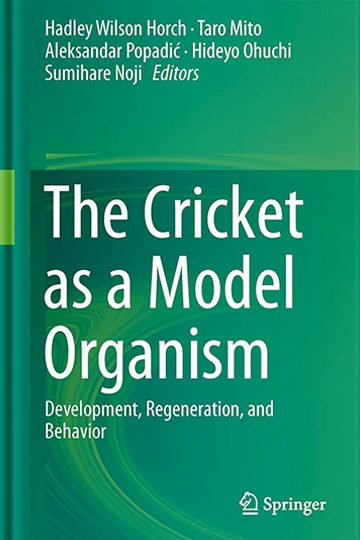Professor Horch's research focuses on how neurons in adult invertebrates recover from injury. Unlike many neuronal systems, the auditory system of the cricket demonstrates robust neuronal growth in response to denervation. Removing one ear induces auditory interneurons to sprout new dendrites, grow abnormally across the mid-line, and form synapses with intact auditory neurons from the opposite ear. Currently, students in my lab are using molecular biology to clone the genes for guidance cues from crickets. We hope to examine the expression of these cues to assess if they might be involved in this regeneration. We are also examining the 3-dimensional characteristics of these regenerated neurons. The lab regularly uses techniques such as dye backfills, immunohistochemistry, in situ hybridization, PCR, and confocal microscopy. We are also attempting to develop a method for transfecting living neurons in crickets.
News
- "Branching out: The Molecular Gardeners of Dendritic Arbors" - Hadley Horch, Norma L. and Roland G. Ware Jr. Professor of Biology and Neuroscience Inaugural Lecture (March, 2025)
- Six Women Scientists Receive Prestigious External Grants in Spring Semester, Bowdoin News (October 25, 2018)
- Sarah and James Bowdoin Day 2017, Bowdoin News (October, 2017)
- Professor Horch on Why Crickets Matter, Bowdoin News (May 1, 2017)
Sample Student Lab Research
The Neuroscience department awards its outstanding students with the opportunity to do serious lab research over the Summer. Stipends are available and projects are often co-authored for publication. This Summer has again yielded outstanding original research in the filed. Here are some sample projects:
Recent honors theses
Alicia Edwards
Semaphorin-induced plasticity in the nervous system of the cricket, Gryllus bimaculatus.
Samuel Brill-Weil
That’s DOPE: The delayed onset, prolonged excitation response of a primary auditory interneuron in Gryllus bimaculatus.
Felicia Wang
Differential gene expression during compensatory plasticity in the prothoracic ganglion of the cricket, Gryllus bimaculatus.
Julie Scholes
Characterization of negative phonotactic behavior in the adult cricket, Gryllus bimaculatus.
Jack Moynihan
Using a combined physiological recording and electrophoretic staining technique to better understand compensatory plasticity in Gryllus bimaculatus.
John Pietro
The role of dscam2 in neuronal regeneration in the auditory system of the common field cricket Gryllus bimaculatus.
Shannon Knight
Determining the role of semaphorin proteins in the compensatory growth
observed in adult Gryllus bimaculatus.
Maddie Rutan
Effect of injury on alternative polyadenylation of neuronal
synaptobrevin in the cricket, Gryllus bimaculatus.
John Hobbs
The effects of hormones on the sexual dimorphic auditory dendritic compensatory regeneration of the Cricket Gryllus bimaculatus.
Adam Zhang
Quantifying Changes in Semaphorin Expression after Deafferentation in Gryllus Bimaculatus.

